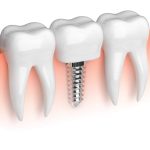Ehlers-Danlos Syndrome (EDS), is a group of connective tissue disorders that affect about 1 in 2,500 to 1 in 5,000 people.
Despite its prevalence, EDS often goes undiagnosed, making it one of the most under-recognized conditions worldwide.
It can affect individuals of any racial or ethnic background, with females being more commonly affected.
So I researched it and found 23 signs you grew up with Ehlers-Danlos syndrome.
What Is Ehlers-Danlos Syndrome?
Ehlers-Danlos Syndrome (EDS) is a group of genetic disorders that affect the body’s connective tissues, which provide support to the skin, bones, blood vessels, and other organs.
This syndrome arises from abnormalities in collagen production or structure, leading to hypermobility of joints, skin that is unusually stretchy or fragile, and various other symptoms.
Ehlers-danlos Syndrome Types
There are currently 13 recognized types of Ehlers-Danlos Syndrome, each with its unique characteristics.
Let’s take a closer look at some of the most common types:
- Classical Type (EDS Type I & II)
This type is characterized by hypermobile joints, stretchy skin, and fragile skin that bruises easily. People with classical EDS may also experience joint dislocations and chronic joint pain.
- Hypermobility Type (EDS Type III)
Most of the time people with hypermobility type EDS often have extremely flexible joints, leading to frequent dislocations and chronic joint pain.
They may also have soft, velvety skin that is easily bruised.
- Vascular Type (EDS Type IV)
Vascular EDS is the most serious form of the condition and affects the blood vessels, increasing the risk of organ rupture and life-threatening complications.
Those with this type often have thin, clear skin and distinct facial features.
- Kyphoscoliotic Type (EDS Type VI)
This kind of condition makes muscles weak, bends the spine, and makes joints very flexible.
- Arthrochalasia Type (EDS Type VIIA & VIIB)
Arthrochalasia EDS is rare and is characterized by severe joint hypermobility and congenital hip dislocation.
However, People with this type might also have easily damaged skin and a greater chance of their joints popping out.
- Dermatosparaxis Type (EDS Type VIIC)
This is one of the rarest forms of EDS and is characterized by extremely fragile skin that tears or bruises easily.
These are just a few examples of the different types of Ehlers-Danlos Syndrome.

23 Signs You Grew Up With Ehlers-Danlos Syndrome
Here are 23 signs that indicate you may have grown up with Ehlers-Danlos Syndrome:
1. You Were Flexible Beyond Your Years
As a child, you could easily bend your fingers backward, perform contortions, or demonstrate hypermobility in your joints.
2. Frequent Joint Dislocations
Joint dislocations were a common occurrence, often happening during routine activities or even while sleeping.
3. Scars from Minor Injuries
Minor cuts and bruises often left more significant scars than expected due to fragile skin and delayed wound healing. That’s the common sign of EDS.
4. You Mastered the Art of Taping and Bracing
Sometimes, your bathroom cabinet was filled with various tapes, braces, and supports to stabilize your joints and prevent injuries.
5. Physical Education Was a Challenge
Most EDS patients can’t perform directly in sports. That’s why participating in sports or physical activities at school requires extra caution and often leads to injuries.
6. Experiencing Digestive Issues
According to a gastroenterologist, gastrointestinal symptoms such as chronic constipation, acid reflux, or irritable bowel syndrome are part of EDS patients.
7. You Were Familiar with Subluxations
Partial dislocations or subluxations of joints were not just medical terms but regular occurrences you learned to manage. Of course, most Ehlers-Danlos syndrome people face this symptom.
8. Frequent Fatigue and Pain
Chronic fatigue and widespread pain were constant companions, often impacting your ability to engage in daily activities.
9. You Had an Extensive Medical History
It’s very usual. Since you were young, your calendar has been packed with doctor’s visits, physical therapy sessions, and specialist appointments.
10. Skin Sensitivity and Bruising
Your skin was hypersensitive to touch, and even minor bumps or pressure could result in bruising.
11. You Mastered Self-Advocacy Early On
Speaking up for yourself in doctor’s offices and hospitals became easy because you had to deal with complicated healthcare systems to get the right diagnosis and treatment.
Although it’s natural when you are visiting most of the time in hospitals.
12. School Accommodations Were Necessary
In school, you need special arrangements like more time for homework or different gym activities to match your condition.
13. Anxiety and Depression Were Common Companions
Coping with the challenges of EDS often led to feelings of anxiety, depression, or isolation, especially during flare-ups or periods of intense pain.
14. You Had a Collection of Splints and Orthotics
Customized splints and orthotic devices became essential tools to support your joints and improve mobility.
15. Hypermobility
While being hypermobile had advantages, such as excelling in certain sports or activities, it also made you more prone to injuries and complications.
16. Orthostatic Intolerance
Living with EDS means that getting up too fast can make you feel dizzy, light-headed, or even faint because of orthostatic intolerance.
17. Difficulty Regulating Body Temperature
A common sign is when your body has trouble controlling its temperature, making you feel uncomfortable in hot or cold conditions and very sensitive to changes in the weather.
18. You Became an Expert in Pain Management
Some physiotherapists explained that as time passed, you developed a toolbox of pain management techniques, from heat therapy to meditation, to cope with chronic pain.
19. Multiple Diagnoses Were the Norm
Alongside EDS, you can face a list of related medical conditions and comorbidities, such as dysautonomia, fibromyalgia, or chronic fatigue syndrome.
20. Vision issues, Migraine Problems
Vision problems can arise, including myopia, astigmatism, or even more severe conditions like keratoconus. EDS is often comorbid with conditions like migraines, and POTS, a form of dysautonomia.
21. Hyperextended knees
Hyperextension of the knees beyond the normal range is often observed in individuals with EDS due to joint laxity.
22. Slow Running Ability
Difficulty running fast or participating in high-impact activities is common due to the risk of joint dislocation or injury.
23. Growing Ankle Pains
Kids often get growing pains, but people with EDS might feel them differently.
If your ankles hurt as you grow, it could mean you have this syndrome. Finding this out early can help doctors figure out what’s causing it.
Read More: Parasite Die-Off Symptoms: How To Get Rid Of It
Takeaway
There isn’t a specific cure for EDS, but symptoms can be managed with personalized care that considers each person’s specific needs. Because EDS can show up in different ways, people often need help from different specialists.
The classification of EDS types has changed over time to better understand and group these conditions.
Moreover, managing EDS includes different methods like medication, therapy, and sometimes surgery.
So my recommendation is to focus on conservative treatments and consult experienced medical professionals, especially for surgeries.
Don’t forget to share your thoughts on Allfit Well Community.





